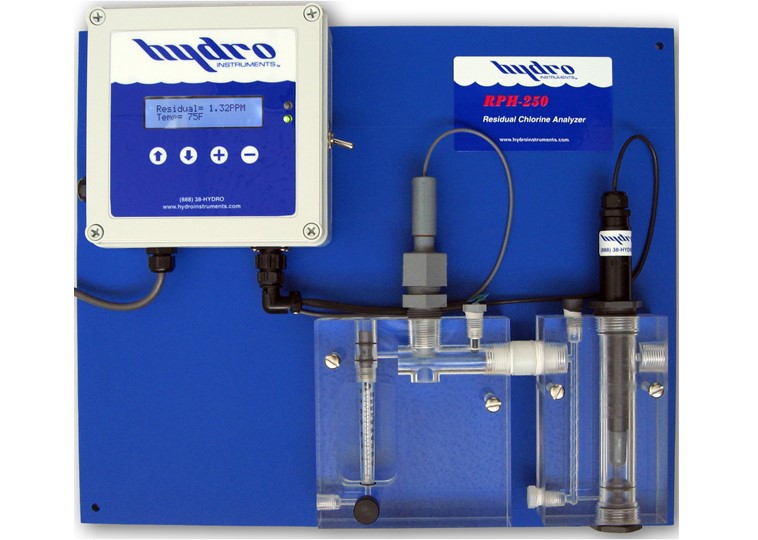The Series RPH-250 is an Amperometric Probe-Style Chlorine Residual Analyzer. This Bufferless Residual Monitor is also capable of controlling chemical disinfection feed systems. The chlorine probe style analyzer can be used for measuring Free and Total Chlorine and is a favorite for use in potable water applications. These reagent free chlorine analyzers are ideal for applications targeting water distribution networks, pumping stations, and other public drinking water facilities.
Basic Specifications
- Sample Water Flow: 8-26 gal/hr
- Sample Pressure: 15 psig
- Accuracy: 0.001mg/l or +/- 1% of range, whichever is larger
- Sensitivity: 0.01 mg/l (10 ppb)
Main Features
- Optional Data Logger
- Measures Free or Total Chlorine
- pH and Temperature Compensation
- Transparent probe and inlet flow cells
- Available Range: 0-2ppm, 0-5, or 0-10ppm
- Allows simple calibration & maintenance
- pH probe can be included
- PRV, pressure gauge, sample control valve & meter tube provided
- Cross-sensitive for: Chlorine Dioxide, Di & Tri-chloramine
- Includes complete PID control programs
- Provides two 4-20mA outputs & one alarm relay


